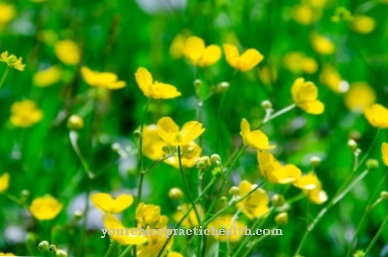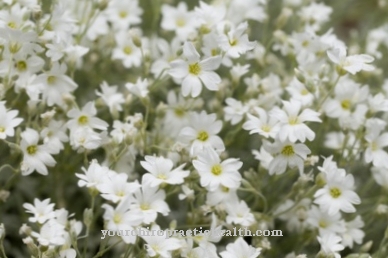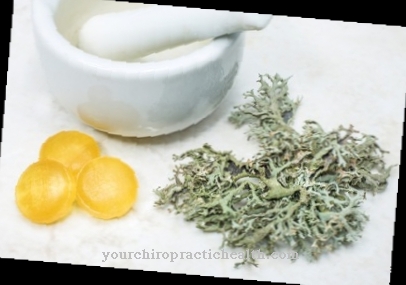Occurrence and cultivation of the common rain cabbage

The annual, rarely biennial plant is between 30 and 100 centimeters high. Despite its size, the half-rosette plant is often overlooked. In Europe it can be found at altitudes of 1800 meters. In the city gardens, the cabbage is usually referred to as a weed and eliminated. Wrongly. In rural areas the plant is still presented to hares and rabbits as food and is gladly accepted by the animals.
The milky sap of the plant is similar to the sap of the dandelion. On the long, thin stems there are panicles of flowers that bloom pale yellow from May to September. The flowers only open in the morning in the sun; they remain closed in bad weather and in the dark. Bees are rare visitors. The sunflower seeds are spread by the wind and animals.
Effect & application
In earlier times, probably already during the Stone Age, the common rain cabbage had a permanent place as a food and medicinal plant. Not only on the menu, but also for medicinal purposes. The weeds contain minerals, mucilage and bitter substances, as well as inulin, which is mainly found in the roots. Inulin is a special, water-soluble prebiotic fiber.
It consists of polysaccharides and fructose molecules and belongs to the fructans. This fiber is absorbed with food, but cannot be broken down in the small intestine. Therefore, the prebiotics get undigested in the lower part of the intestine, where they serve as food for the bifidobacteria. These bacteria promote healthy digestion and strengthen the immune system. This keeps unwanted germs and yeasts at bay. The intestinal flora produces short-chain fatty acids under the influence of inulin, which ensure the regeneration of the intestinal mucosa.
Study results suggest that inulin minimizes the risk of colon cancer. Other research suggests that inulin promotes the absorption of magnesium and calcium. This supports bone health and offers some protection against osteoporosis. Diabetics also benefit from inulin. The substance is used as a starch substitute as it does not have a negative impact on blood sugar levels.
In this respect, the common rain cabbage's reputation as a medicinal plant is justified. Especially since there are only a few plants that have the inulin. In addition to Lapsana communis, there are also dandelions, black salsify, parsnips, chicory, Jerusalem artichokes and artichokes. They all have bitter substances in common, of course, which primarily help with gastrointestinal complaints.
Importance for health, treatment & prevention
Even if the importance of the Lapsana communis has declined, it is still valued by naturopaths and herbalists. This wild plant is especially used for diabetes, liver problems, skin problems and digestive problems. The natural bitter substances of the plant stimulate digestion, especially fat digestion, and promote intestinal peristalsis. Therefore, naturopaths swear by the rain cabbage for digestive problems.
An infusion of flowers and leaves helps against constipation. Bitter substances also strengthen the immune system and stimulate appetite. Rain cabbage is also suitable for external use. Skin inflammation, cuts and other wounds can be treated with freshly squeezed juice or with a poultice made from crushed leaves.The milky sap of the cabbage accelerates wound healing and has an anti-inflammatory effect.
A wound healing agent can be made from flowers soaked in oil. A mixture of Lapsana communis with dandelion, nettle, sarsaparilla and chicory is recommended for a blood cleansing regimen lasting several weeks in spring. With the liquid extract from the cabbage, the blood sugar level can be reduced. A tea made from the leaves of the wild herb helps against swelling of the glands.
Lapsana communis is mainly used in the kitchen because of its slightly bitter taste, which gives many dishes a special aroma. However, not too much should be used, otherwise the bitterness could get out of hand. The fresh leaves of the common rain cabbage are a delicious herb for cooked and raw dishes.
Aromatic vegetables and salads can be made from the young sprouts and shoot tips. They are tastiest between April and May. The narrow leaves of the wild plant can be used as an accompaniment to salad (for potato, pasta and leafy salads) and as an ingredient in steamed spinach and rice dishes until June. From June the leaves become fibrous and the bitter taste can become unpleasant. As a spice, the herb can be used in many ways, dried or fresh.
The rain cabbage gives soups and sauces a pleasantly bitter note. Cut into strips, the leaves can be used in quiches, on homemade pizzas, egg dishes, quark, in omelettes and a vinaigrette. Mixed with mince, the herb also gives meat a pleasantly tart herbal taste. The yellow flowers make a nice, edible decoration. Freshly bloomed or as a bud, they can also be mixed with the salad.



























